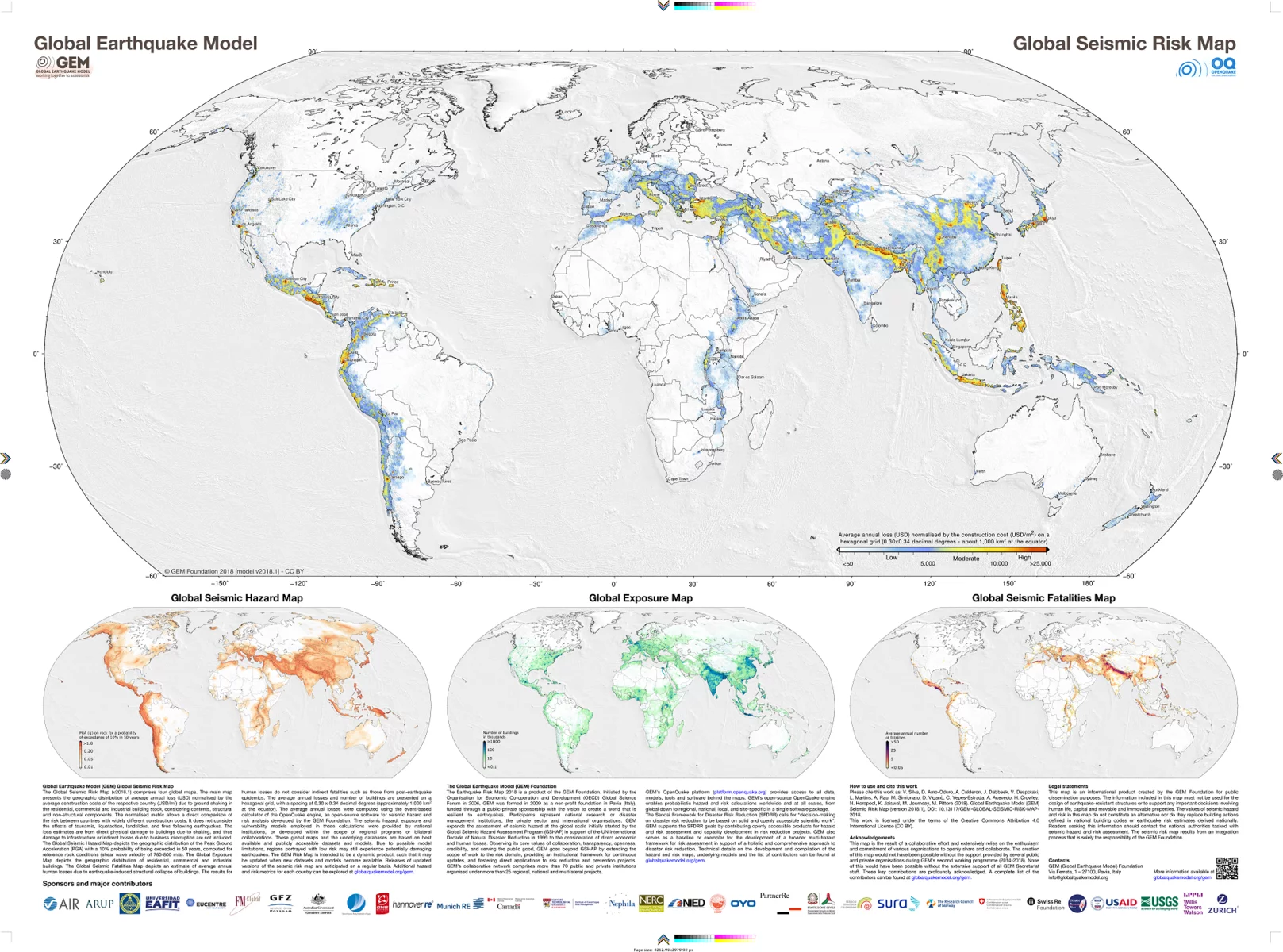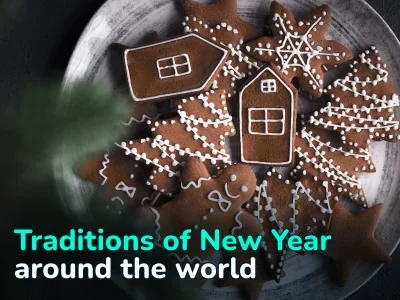
A Strong Earthquake has Struck Tibet. Where in the World do Earthquakes Occur Most Often? List of Countries and a Checklist if You are in the Midst of Events
Between January and September 2025, several major earthquakes occurred, killing more than 8,800 people worldwide.
The deadliest earthquake of the year occurred on March 28 in the central part of Myanmar (Sagaing region). Aftershocks of magnitude 7.7 killed 5,456 people in Myanmar and 103 people in Thailand. The epicenter was located just 16 km from Mandalay, the second largest city in the country. More than 11,400 people were injured. The collapse of mosques during Friday prayers, which buried hundreds of believers, was especially tragic.
The second largest number of victims was the 6.0 magnitude earthquake in eastern Afghanistan on August 31, which claimed the lives of 2200-3000 people in the provinces of Kunar, Nangarhar, Laghman, and Nuristan. A shallow hearth (8 km) and mountainous terrain aggravated the destruction: almost all buildings in the five districts of Kunar were damaged or completely destroyed. The number of injured was more than 3,600 people.
The third deadliest was the Tibetan earthquake on January 7 in Tingri County. Magnitude 7.1 (according to the USGS) resulted in 126 confirmed casualties and 188 injured, with over 120,000 people evacuated from the disaster area.
According to earthquake statistics, China remains one of the world's "leaders" in the number of destructive seismic events. It is followed by Indonesia and Iran.
Where do Earthquakes Occur?
Numerous factors can cause earthquakes, including plate tectonics, magma movement in volcanoes, temperature changes, and strong winds.
No part of the world is immune to earthquakes, but earthquakes are more likely to occur in these three earth zones:
- The Circum-Pacific Belt, also called the Ring of Fire. It is located along the edge of the Pacific Ocean, where about 81% of the world’s largest earthquakes occur. Earthquakes in these areas are caused by sliding between tectonic plates and rupturing within them.
- Alpine belt of seismicity. Stretching from Java to Sumatra, it passes through the Himalayas, the Mediterranean, and the Atlantic.
- The Mid-Atlantic Ridge. The ridge marks where two tectonic plates diverge. Most of the Mid-Atlantic Ridge is deep underwater. However, there is, for example, Iceland, which is directly above the Mid-Atlantic Ridge, and earthquakes are not uncommon there.
 A map of the Ring of Fire
A map of the Ring of Fire
10 Most Earthquake Prone Countries in the World
Japan
Japan, located in the Pacific Ring of Fire, tops the list of the world's most seismically active countries, with an average of more than 1,500 earthquakes of magnitude 4 and above occurring in the country annually. Therefore, the Japanese seismic network is the densest in the world.
The Great East Japan Earthquake, also known as the Tohoku Earthquake, occurred on March 11, 2011, with a magnitude of 9.0. It caused a devastating tsunami that caused massive destruction and led to the Fukushima nuclear disaster.
Because of its location along the Pacific Ring of Fire, Japan also experiences frequent volcanic eruptions.
Indonesia
Almost every year, Indonesia experiences earthquakes greater than 6.0 magnitude.
The great Sumatra-Andaman earthquake off the coast of Sumatra on December 26, 2004, caused one of the deadliest tsunamis in history. The widespread devastation in the Indian Ocean killed about 230,000 people in several countries, but Indonesia was the hardest hit.
In 2018, the country had nine earthquakes greater than 6.0, which killed thousands of people.
Indonesia uses an earthquake early warning system called InaTEWS. This system uses a network of seismometers and buoys to detect earthquakes and monitor tsunamis.
China
China is one of those countries where earthquakes are the most destructive. One example is the magnitude 7.9 earthquake that struck Sichuan Province in 2008. As a result of this tragedy, more than 87,000 people were killed or went missing.
China has imposed strict seismic design standards to make structures more earthquake-resistant. A famous example is the Bird's Nest Stadium in Beijing, designed to withstand strong earthquakes.
Philippines
The Philippines is one of the most earthquake-prone countries in the world. Because of the mountainous terrain, earthquakes can also cause deadly landslides. Because of these frequent natural disasters, many people living in this country build strong structures.
Iran
Iran is located along several tectonic plate boundaries and fault lines. One of the strongest earthquakes in Iran occurred in Gilan Province. This earthquake in 1990 killed more than 40,000 people.
Turkey
Turkey often suffers from seismic activity because of its location near several major fault lines. The country is sandwiched between the Eurasian Plate, the African Plate, and the Arabian Plate, which causes constant tremors of some degree.
Peru
Peru is in the center of the Ring of Fire and regularly experiences small tremors as well as moderate to strong earthquakes. In order to prevent deaths from such natural disasters, the country conducts nationwide earthquake drills.
U.S.
Although not located in a seismically active region, the United States has a unique geological landscape that makes it susceptible to earthquakes. The large population also contributes to the high risk of earthquakes in the United States. As a result, even relatively small earthquakes can cause significant damage due to the large number of people affected.
Italy
Italy is prone to seismic activity because of its location on several fault lines. The landscape of steep mountain ranges, inactive volcanoes, and coastal plains also plays a role. One of the most destructive earthquakes in Italy occurred in Messina in 1908 — more than 75,000 people died then.
Mexico
Like many countries along the Pacific Ring of Fire, Mexico is vulnerable to regular seismic activity. Mexico City is especially vulnerable to earthquakes because of its geology, as the city is built on the bottom of an ancient lake. Because of this, the country has strict building codes and emergency procedures.
The strongest earthquake (with a magnitude of 8.1) ever recorded in Mexico occurred on September 19, 1985. It caused massive destruction in the country and resulted in thousands of deaths.
New Zealand
Seismic activity is common in New Zealand, as it sits on the boundary between the Pacific and Australian tectonic plates. A number of earthquakes take place in the country each year, but most go unnoticed since they are minor. There are, however, times when New Zealand experiences significant earthquakes that cause damage and impact communities. The Christchurch earthquake, which struck on February 22, 2011, was one of the most devastating earthquakes in recent history. A magnitude 6.3 earthquake caused significant damage to buildings and infrastructure as well as significant loss of life.
New Zealand has a well-developed system for monitoring earthquakes and responding to seismic events. The GeoNet project, operated by the government agency GNS Science, monitors seismic activity throughout the country. They provide real-time earthquake information, including the location, magnitude, and depth of earthquakes.

Global earthquake risk map
You can explore the earthquake risk map in more detail here.
The Least Earthquake Prone Areas
Of all the continents, Antarctica has the least number of earthquakes. However, it is important to remember that small earthquakes can occur anywhere in the world.
Also read our material about countries with minimal earthquake risk.
How to Prepare Your Home for a Possible Earthquake
Here are some helpful tips:
- Secure cabinets, shelving units, and bookshelves to the walls. This will prevent them from toppling over during shaking.
- Remove heavy objects from high shelves and mezzanines. If they fall, they can cause serious injuries.
- Attach appliances and mirrors to walls or furniture. This will keep them from falling during an earthquake. You can use strong straps/ropes or special fasteners sold at hardware stores.
- Install stoppers on cabinet doors to prevent contents from falling out during shocks.
- Stick anti-shock film on the glass on them or install blinds/rollers. This will keep the glass from shattering.
- Familiarize yourself with ways to shut off gas, electricity, and water in case of leaks after an earthquake. Determine where utilities enter the house.
- Create an emergency supply of water (at least 3 liters per person per day) and long-lasting food (canned goods, dry cereals, pasta, dried fruit, nuts, galettes, and dry cookies).
- Prepare an emergency kit: flashlights, battery-operated radio, tools, first aid kit, and warm clothes.
- Choose a safe place in the house to shelter during shocks — under a sturdy table or against an inside wall.
An Earthquake is Already Happening. What to Do?
It sounds strange, but the most important thing at this moment is not to panic. With a cool mind, it will be much easier to understand the situation and take the necessary steps.
When you are at home, stay away from windows and all kinds of unstable structures. Until the tremors subside, you must be in a safe space. To do this, you need to create such a space: squat under a stable table or surround yourself with stable pieces of furniture. Wrap your hands around your head and cover it with a cushion, a book, or something similar.
During the shocks, do not run upstairs, go on the balcony, use the elevator, try to get out through windows or the balcony, use matches, or touch the buttons of plugged-in electrical appliances.
After the tremors: turn off the electricity in the house, shut off the water and gas, and turn off the stove and heaters. Gather the necessary documents and «emergency go bag» and proceed to the emergency assembly point (usually indicated in front of the entrance to the entrance hall).
Once outside, stay away from any buildings, trees, or power lines; find a safe, open area, and squat down.
When in a car, pull off to the side of the road away from poles and other structures, turn off the engine, and turn on the hazard warning light. Stay in the car until the tremors stop.
What you should have in your «emergency kit» if you find yourself at the site of an earthquake:
- A four-day supply of drinking water and food;
- a flashlight;
- a whistle;
- a respirator or mask;
- goggles and gloves;
- personal hygiene items;
- first aid kit;
- documents in a sealed bag;
- knife 3/5 in one;
- for children — formula with food, diapers, and a pacifier; for animals — dry food.
There is also an app that notifies you of strong tremors in your area.
What to Do After an Earthquake
After the tremors have stopped, it is important to take the following precautions:
- Do not rush to leave the shelter immediately after the tremors end, as there may be aftershocks that can be strong. Leave only after you are sure that the danger has passed.
- Inspect the room for damage and possible debris. Use caution and watch out for broken wires and damaged support structures.
- Turn off gas, electricity, and water supplies if possible to prevent leaks and short circuits leading to fires.
- Use stairs, not elevators. Elevators may become stuck between floors in the event of repeated shocks.
- After exiting a building, move to an open space away from buildings, power lines, and other objects that could fall.
- Do not attempt to drive to earthquake-affected areas. Streets should be kept clear for emergency services to pass through.
- Do not use the telephone except to call emergency services. This will avoid overloading phone lines.
- Provide first aid to victims if necessary, but be careful not to put yourself in danger.
- Check your supplies of food, water, medicines, and other necessities. Replenish supplies if needed.
The most important thing after an earthquake is to remain calm and follow the authorities' instructions.
Frequently asked questions
Which countries are most likely to experience earthquakes?
How do I prepare for an earthquake, and what should I do during an earthquake?
How can I find out about a possible earthquake in advance?
What regions of the planet do not experience earthquakes at all?
How does one realize an earthquake is starting?
What should you do if you get stuck in an elevator during a push?
Is it safe to return to damaged buildings after an earthquake?
Author
I am responsible for editorial work. I write expert interviews and guides.






















